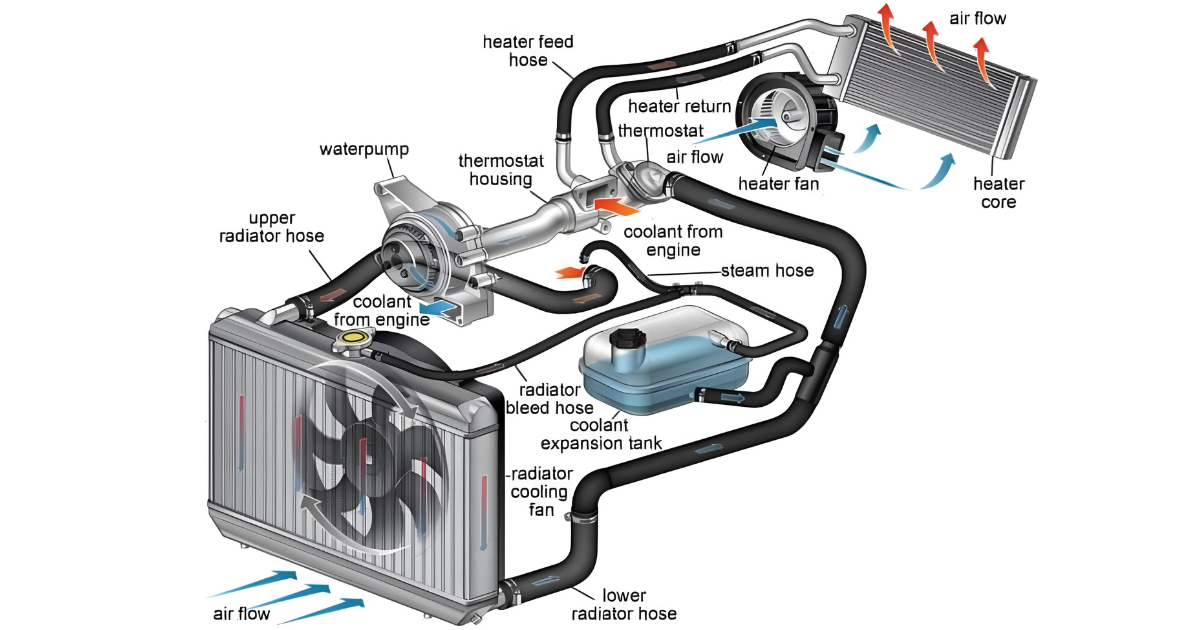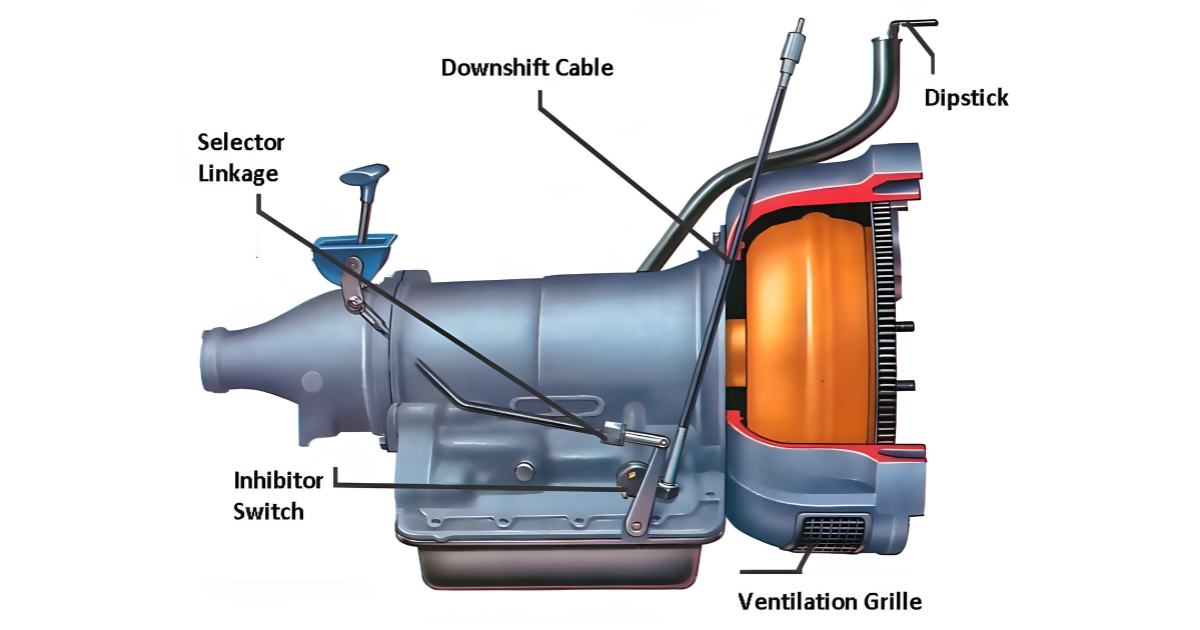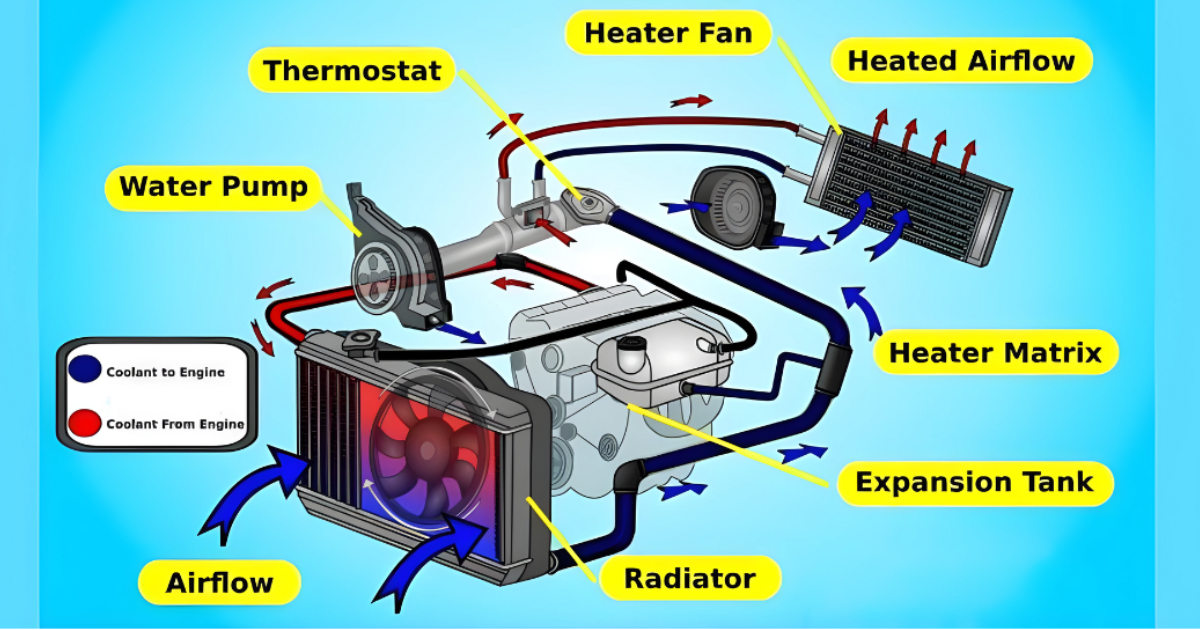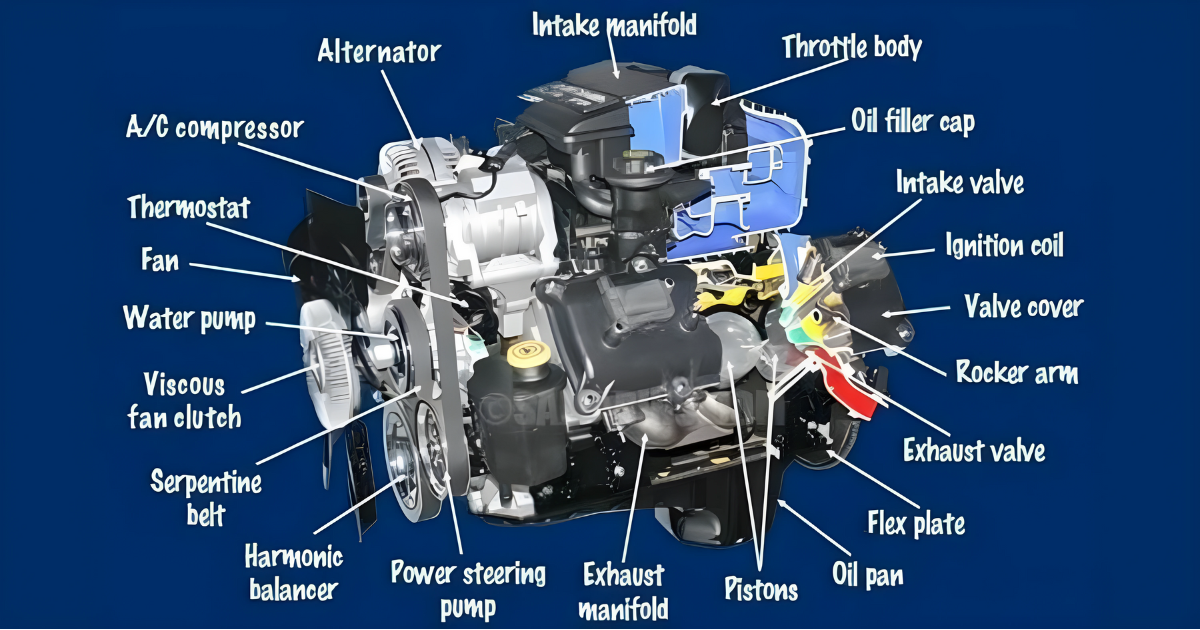Ever wondered how your car engine manages to stay cool even after hours of driving in the blazing sun? The secret lies in its intricate cooling system, a network of components working tirelessly to prevent overheating and maintain optimal operating temperatures.
This vital system circulates a special coolant fluid throughout the engine, absorbing heat from its core and transferring it to the radiator, where it’s dissipated into the surrounding air.
But that’s just a glimpse…
Let’s delve deeper into this fascinating process and explore the key players in this essential symphony of engine temperature management.
Managing Engine Heat
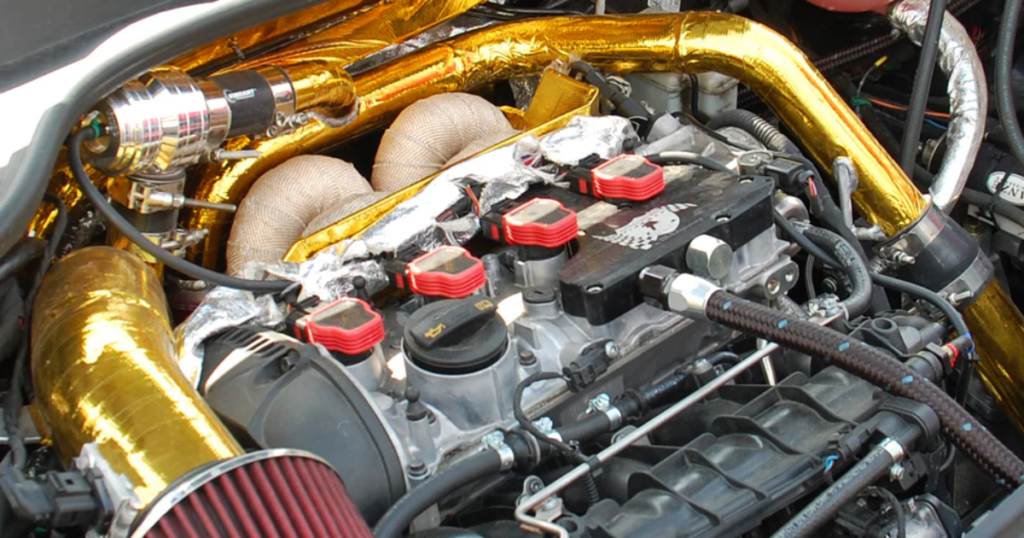
The engine’s combustion process generates an immense amount of heat. As fuel ignites within the combustion chamber, temperatures can soar to levels that would be detrimental to the engine’s health if left unchecked. The car engine cooling system steps onto the stage precisely to manage this thermal ballet.
Coolant
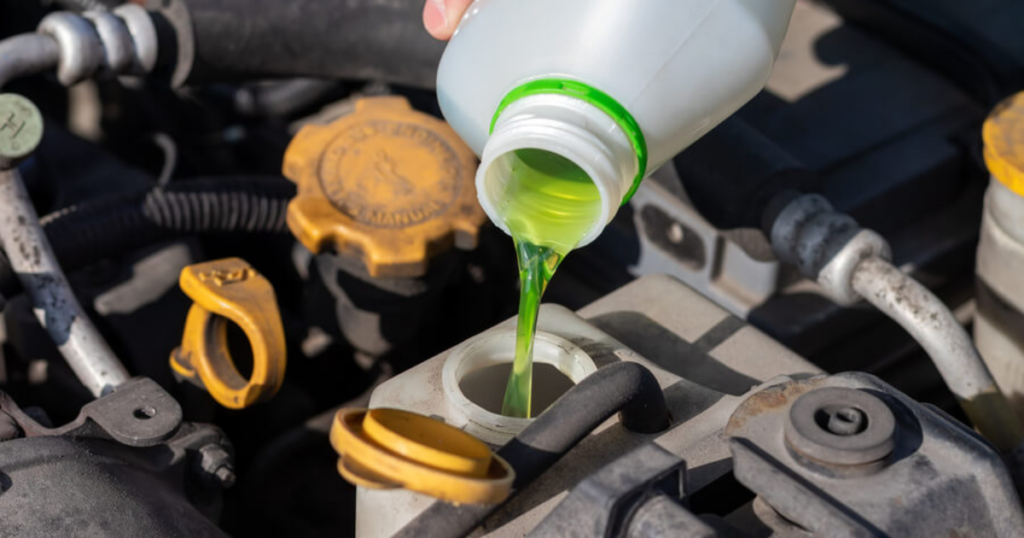
At the core of the cooling system is the coolant, a specially formulated mixture of water and antifreeze. This fluid circulates through the engine and absorbs heat from the combustion process. Acting as a heat exchange medium, the coolant undergoes a transformation from liquid to vapor and back, carrying away the excess heat.
Radiators
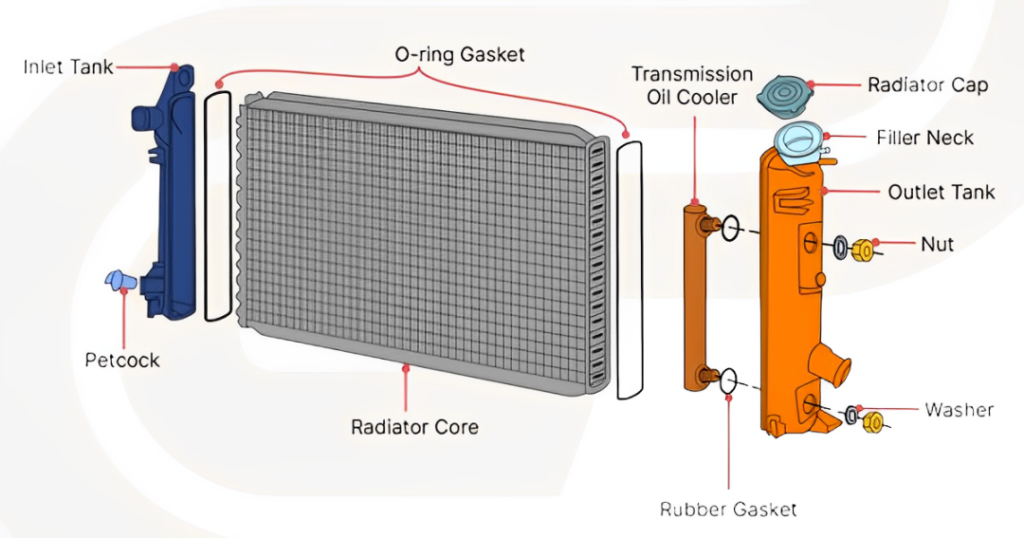
The coolant, now laden with heat, makes its way to the radiator, the canvas where cooling magic unfolds. Radiators consist of a network of small tubes and fins. The airflow produced by the vehicle’s movement aids in the heat dissipation into the fins as the hot coolant passes through these tubes.
Fans
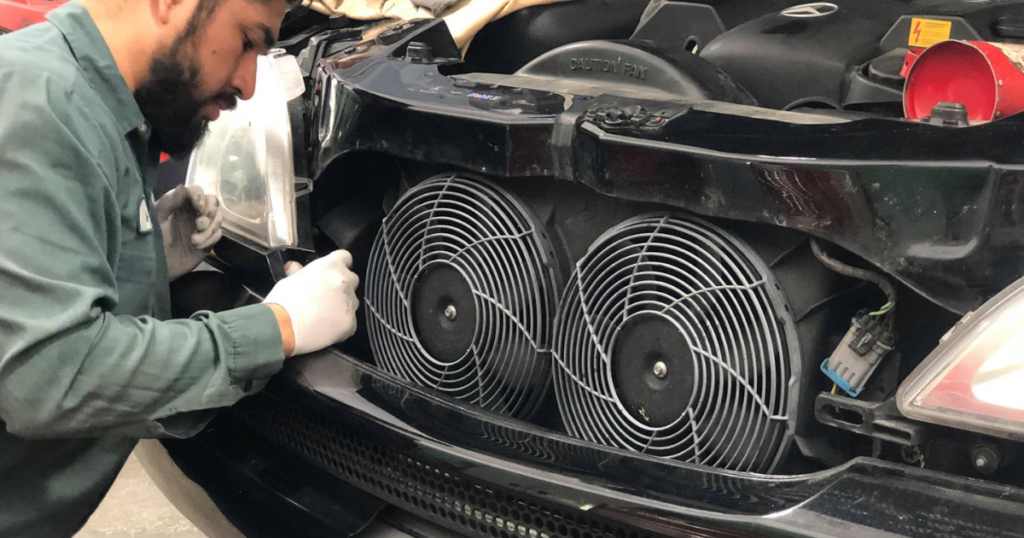
The radiator’s effectiveness is further enhanced by cooling fans. These fans kick into action when the vehicle is stationary or moving at low speeds, ensuring a continuous flow of air over the radiator. This additional airflow enhances the heat dissipation process, preventing the engine from reaching dangerous temperatures.
Water Pump
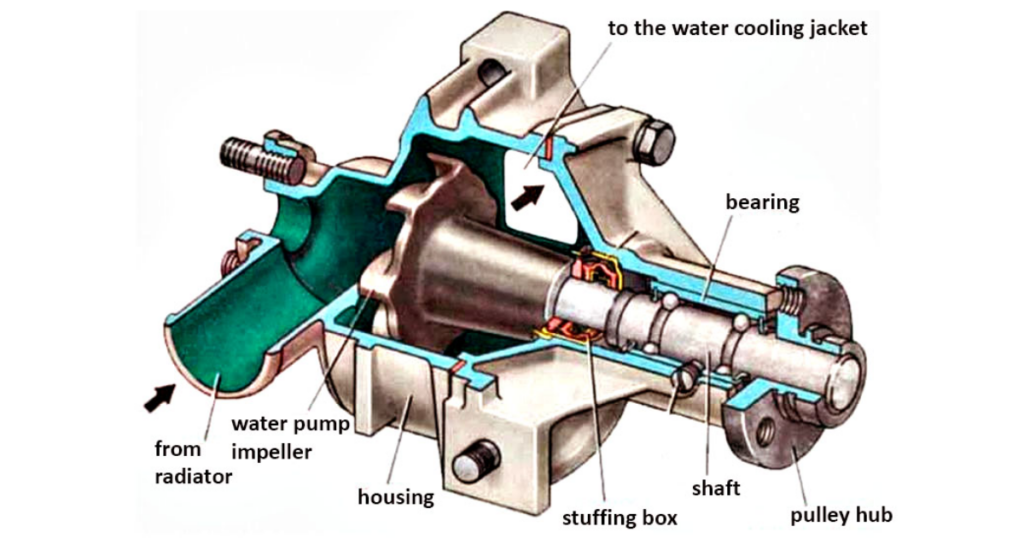
Guiding the flow of coolant through this intricate dance is the water pump. The water pump operates in a closed-loop system, driving the coolant through the engine, into the radiator, and back again. This constant circulation is vital for maintaining a balanced and regulated engine temperature.
Thermostat
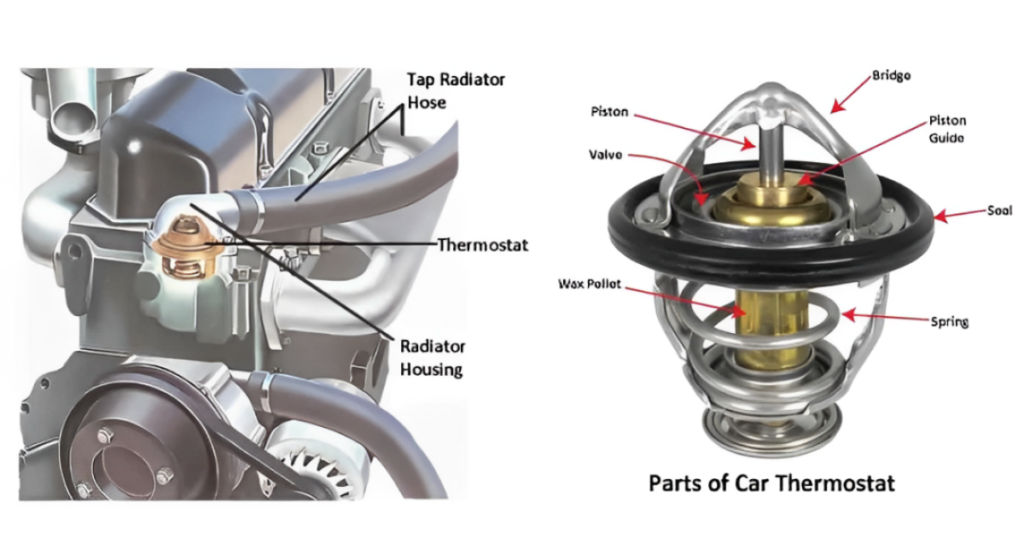
The thermostat acts as the cooling system’s conductor, regulating the flow of coolant based on the engine’s temperature. When the engine is cold, the thermostat keeps the coolant circulating within the engine to expedite warm-up. As the engine reaches optimal temperature, the thermostat opens, allowing the coolant to flow to the radiator for cooling.
Expansion Tank
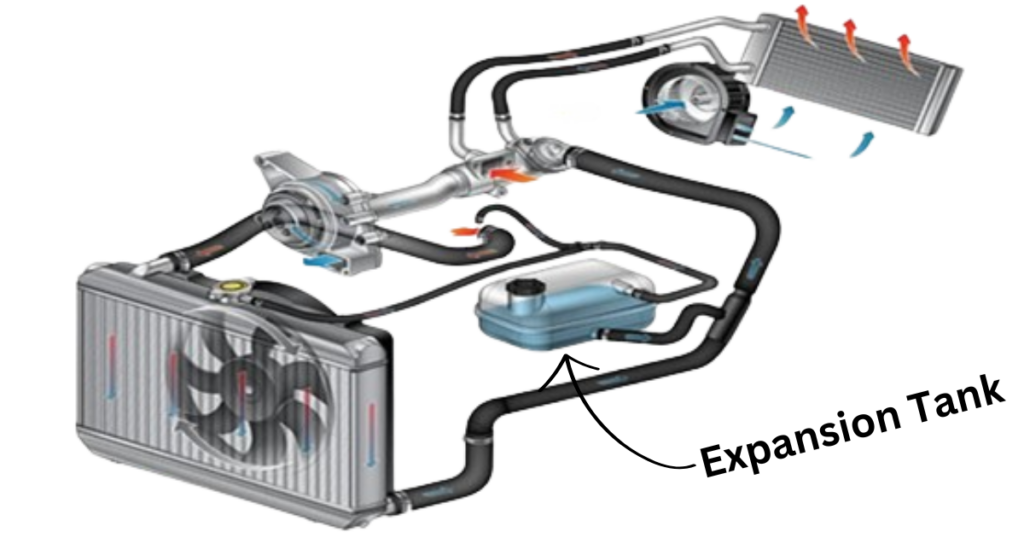
An expansion tank serves as a safety net for the cooling system. As the coolant heats and expands, excess fluid is directed to the expansion tank. Conversely, when the engine cools down, the coolant is drawn back into the system. This prevents air pockets in the cooling system and ensures a consistent coolant level.
Pressure Cap
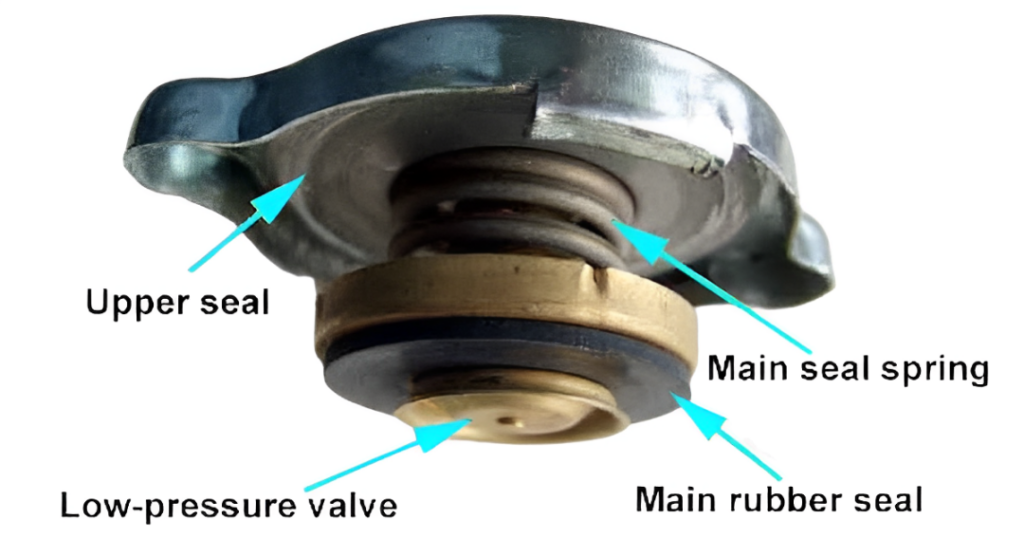
The pressure cap on the radiator is a crucial guardian of the system. It regulates the pressure within the cooling system, raising the boiling point of the coolant. This prevents premature boiling and contributes to the system’s overall efficiency.
Conclusion
The cooling system for a car engine is made up of many different parts that all work together to keep the engine at a healthy temperature range so it lasts as long as possible. The amazing engineering that keeps our cars going smoothly is shown by the well-coordinated movements of coolant, radiators, fans, water pumps, thermostats, and other parts.
As we appreciate the intricacies of this cooling symphony, we gain a deeper understanding of the delicate balance required to prevent the engine from overheating from its performance.
For an animated view of the engine cooling system and how it works, have a look at the video below.
